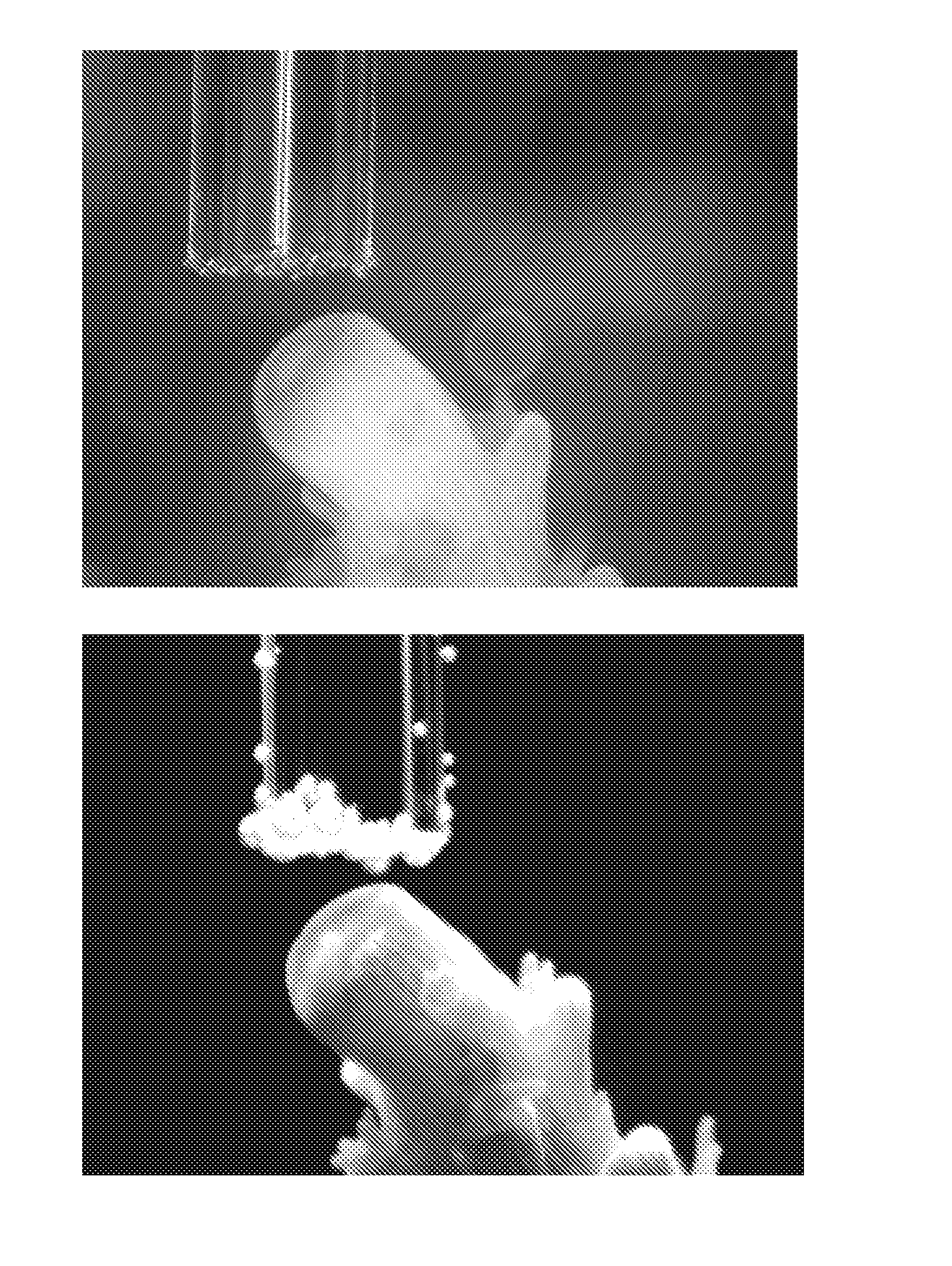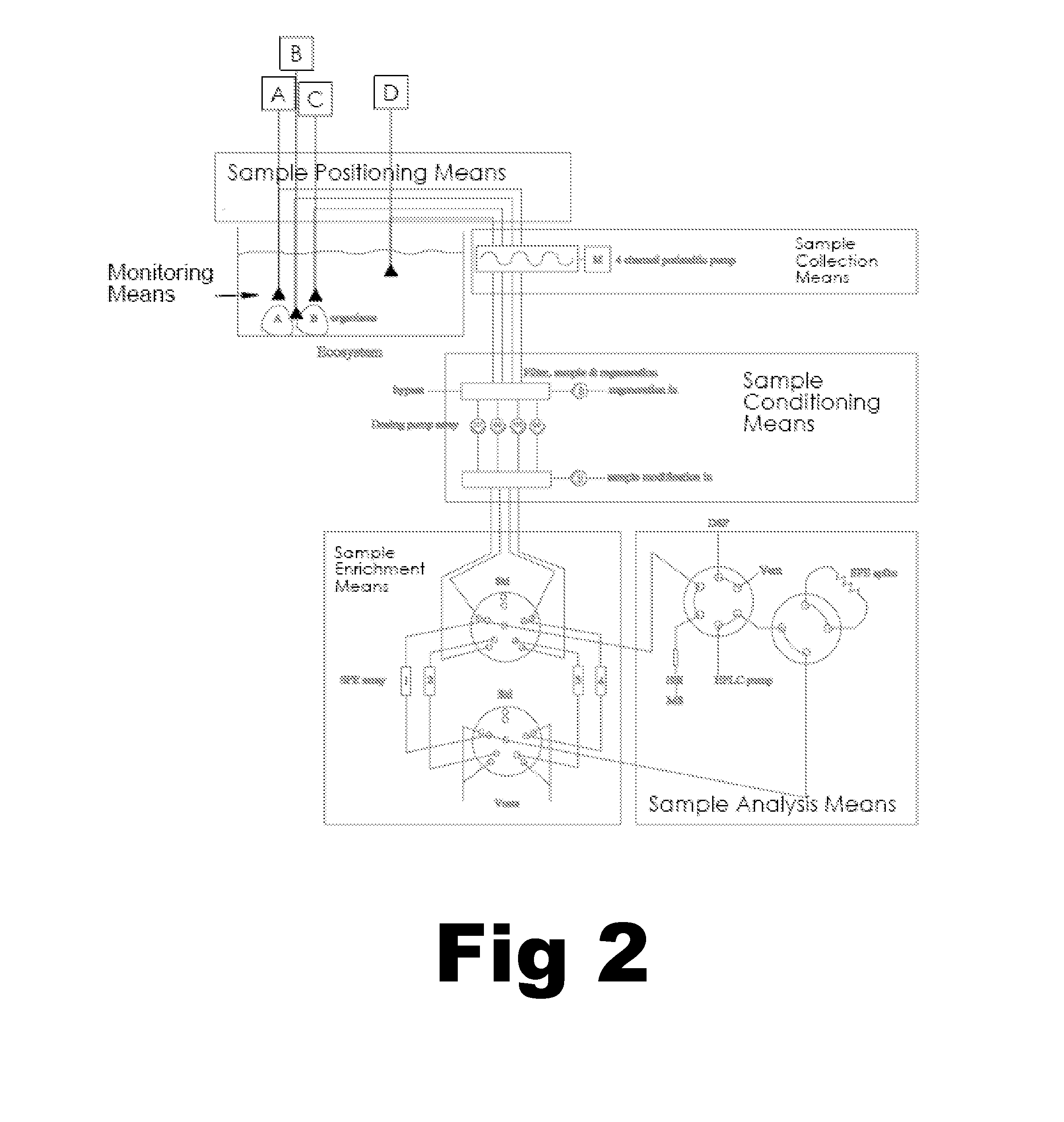Micro-Sampling for Aquatic Chemical Analysis
a micro-sampling and chemical analysis technology, applied in the field of chemical and biomolecular testing and control of cellular behavior, can solve the problems of missing information in the process, sampling techniques prior, and failing to provide adequate spatial and temporal information
- Summary
- Abstract
- Description
- Claims
- Application Information
AI Technical Summary
Benefits of technology
Problems solved by technology
Method used
Image
Examples
embodiment
Preferred Embodiment
[0024]A preferred embodiment is schematically illustrated in FIG. 2. The cultured marine ecosystem is schematically represented as an aquarium tank containing species A and B. Four sample probes are inserted into the tank at various observation positions relative to the observed species. One probe at organism A, one at organism B, one at the interface between the two species, and one in the background as a control measurement. Each sample probe (A through D) can be manually or automatically positioned by a sample positioning means. The temporal and spatial position of each sample probe can be fixed or movable depending on the nature of the experiment, one alternative embodiment of this invention used a monitoring means to observe the conditions of both sample and observed organism. For example, the monitoring means are capable of monitoring movement of the observed species and automatically changing sample probe position relative to sample organism. All four prob...
PUM
 Login to View More
Login to View More Abstract
Description
Claims
Application Information
 Login to View More
Login to View More - R&D
- Intellectual Property
- Life Sciences
- Materials
- Tech Scout
- Unparalleled Data Quality
- Higher Quality Content
- 60% Fewer Hallucinations
Browse by: Latest US Patents, China's latest patents, Technical Efficacy Thesaurus, Application Domain, Technology Topic, Popular Technical Reports.
© 2025 PatSnap. All rights reserved.Legal|Privacy policy|Modern Slavery Act Transparency Statement|Sitemap|About US| Contact US: help@patsnap.com



